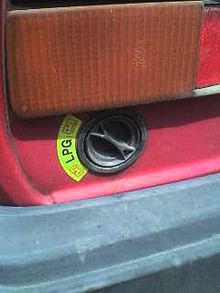Liquefied petroleum gas
Liquid petroleum gas (LPG) is the mixture of liquefied gases present in natural gas or dissolved in oil. It involves physical and chemical processes, for example the use of methane. The LPG components, although at ambient temperature and pressure are gases, they are easy to liquefy; hence its name. In practice, it can be said that LPG is a mixture of propane and butane.
Propane and butane are present in crude oil and natural gas, although some is obtained during petroleum refining, primarily as a by-product of catalytic fractional distillation (FCC, stands for Fluid Catalytic Cracking).
LPG in refineries
It begins when the crude oil from the oil wells reaches a primary refining, where different distillates are obtained, among which are wet gas, naphthas or gasoline, kerosene, atmospheric gas oils or diesel, and gas oils of emptiness.
The latter (vacuum gas oils) are the raw material for the production of gasoline in catalytic cracking processes. The process begins when these are taken to an FCC plant and, through a primary reactor based on a high-temperature catalyst, LPG, gasoline and other heavier products are obtained. That mixture is then separated in distillation trains.
LPG from natural gas
The natural gas of propane and butane can be extracted through processes that consist of reducing the temperature of the gas until these components and other heavier ones condense. The processes use refrigeration or turboexpanders to achieve temperatures below -40ºC, necessary to recover propane. Subsequently, these liquids undergo a purification process using distillation trains to produce liquid propane and butane or directly LPG.
Marketing
In Europe, these gases are marketed separately, although in reality it is always a mixture of the two in which the gas that gives the name dominates. Butane is normally distributed in cylinders and propane in bulk to supply tanks located on the ground (buried or not), although it is also sold in cylinders and cylinders.
LPG is characterized by having a high calorific value and a density greater than that of air.
In Directive 2014/94/EU of the European Parliament and Council, both liquefied petroleum gas (LPG) and compressed natural gas (CNG) are considered the main alternative fuels. These could come to a future to replace oil as fuel. They are also a more immediate and economical solution compared to other possible energies such as biofuels and electricity.
Uses
The main uses of LPG are the following:
- Obtaining olefins, which are used to produce numerous products, including most plastics.
- Fuel for cars, one of whose variants is the autogas.
- Refinery fuel.
- Domestic fuel (by claw or light bulbs, stationary deposits or distribution networks; mercaptan is added to detect possible leaks through the smell).
- Industrial processes, heating and drying agricultural products.
- Fuel for electrical generation.
- Fuel of new military and transport ships.
Contenido relacionado
Photorealism
Plumbing
Encoder
